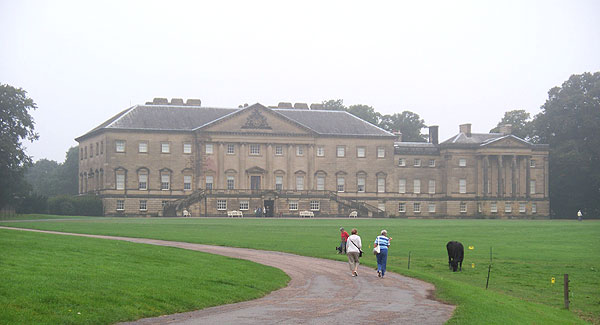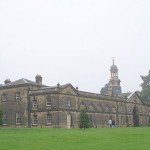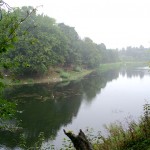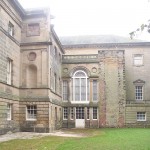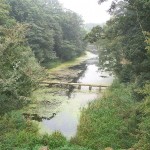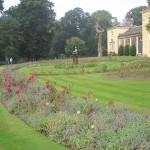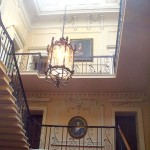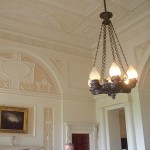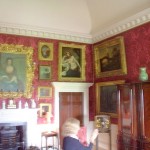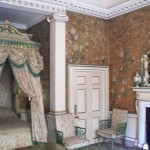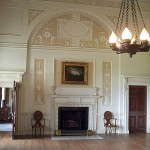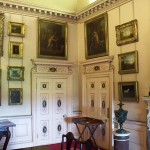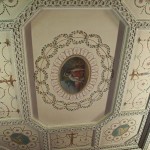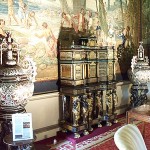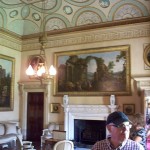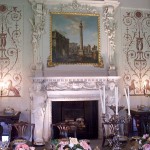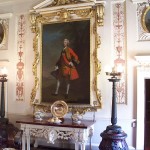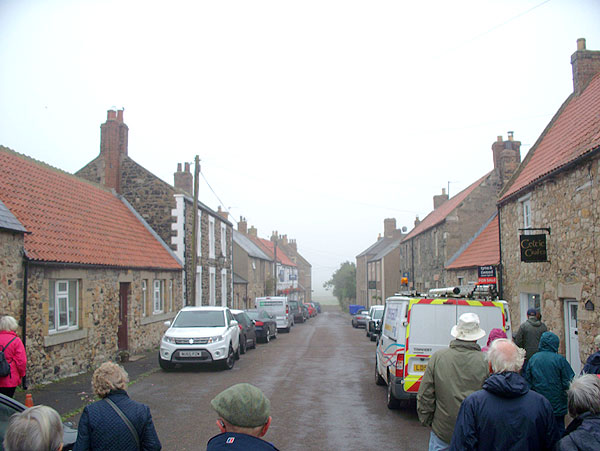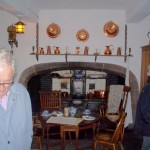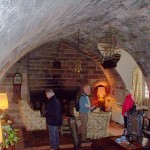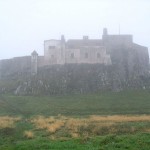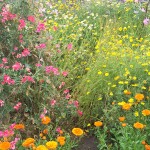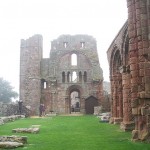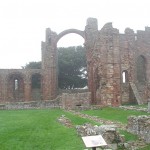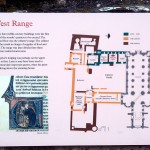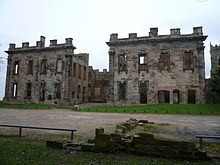
The house stands at the edge of the small village of Sutton Scarsdale, on top of a hill.
The present house, the fourth to stand on the site was built in 1724-29. It contains elements of the earlier houses. In 1919 the house was sold off and bought for architectural salvage, being stripped of all moveable parts including the roof. Some room interiors ended up in America and were used as movie sets.
Before 1919 the house, as shown in surviving photographs, had impressive interiors and plasterwork. Today it is a sad-looking ruin in need of stabilisation. None of the internal walls retain plaster other than a few fragments of fine moulded plasterwork in the principal rooms.
No trace of the gardens remains.
A church stands a few feet from the house. Apparently the church is still in use.
Visiting – you can park behind the house after driving down a lane. There is no charge, but when I visited the house was surrounded by Heras fencing and there was aluminium scaffolding inside the walls, restricting views.

